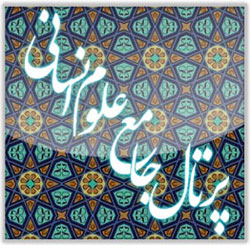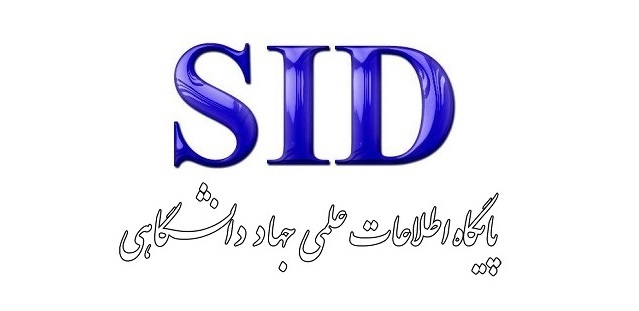Network Analysis for Prioritizing Urban Regeneration Actions in Deteriorated Areas of the Ten Municipal Districts of Tabriz Metropolis
Keywords:
Recreation, Urban Decay Area, Index, Network AnalysisAbstract
Today, the existence of deteriorated urban areas is among the realities of medium and large cities in the country. These areas bring with them specific issues, problems, and needs that have captured a significant share of urban planning activities. Therefore, regeneration must be placed among the priorities of action. Accordingly, the main objective of the present study is to apply network analysis through pairwise comparison of the urban districts of Tabriz for weighting purposes and subsequently determine their ranking based on the obtained scores using the Analytic Network Process (ANP) model. In this regard, various theoretical indices were first reviewed, and the measures of this research were identified. Based on these measures and for the purpose of regenerating the deteriorated urban areas in Tabriz metropolis, the ten districts were pairwise compared with the assistance of expert opinions from stakeholders, influencers, participants, and authorities. Finally, it was observed that District 4 of Tabriz, with a very slight difference compared to District 1, possessed a slightly higher weight and, consequently, holds the top priority for urban regeneration actions.
Downloads
References
1. Eskandari N, editor Urban Regeneration and Its Impact on Urban Deteriorated Fabrics2016; Tehran: International Conference on Architectural Engineering and Urban Development.
2. Ghorbanian M, editor Urban Deteriorated Fabrics: An Opportunity or Threat for Cities?2015: The First Annual Conference on Architectural, Urban Development, and Urban Management Research.
3. Pourahmad A, Hadavi F, Keshavarz M. Sustainable Regeneration of Urban Inefficient Fabrics. Environmental Planning Quarterly. 2017;10(37):7.
4. Ardastani Z. Explaining the Indigenous Model of Urban Regeneration for the Revitalization of Deteriorated Fabrics. Tehran: Tarbiat Modares University; 2016.
5. Ghahremani M, Ghahremani G, editors. Improvement and Renovation of Deteriorated Fabrics with Emphasis on Identity Giving2011: The Third National Conference.
6. Boonstra A. Interpreting an ERP-implementation project from a stakeholder perspective. International Journal of Project Management. 2006;24:38-52.
7. Eisa Zadeh A, Abdolkhair FYF, Eisa Zadeh V, Alavi SA, Ray S, Kaplan J, et al. Empowering local communities with monitoring and poverty alleviation strategies in urban areas (Case study: District 9 of Tehran). 2024.
8. Izadi MS, editor A New Approach to Urban Organizing and Regeneration Programs: Review of Findings from the Analysis and Evaluation of Urban Landscape Plans2010; Shiraz: The Second National Conference on Improvement and Regeneration of Urban Historical Deteriorated Fabrics and Informal Settlements.
9. Reza G, Ezatpanah B. Examining the components of urban resilience with an emphasis on natural disasters (floods) in Tabriz city, a case study of areas 2, 3, 4 and 7 of Tabriz city. Journal of Urban and Regional Policy. 2022;3(1):1-20.
10. Supreme Council of Iranian A, Urban D. Guide to Identification and Intervention in Deteriorated Fabrics. Tehran: Ide Pardazan Fan va Honar Company; 2005.
11. Ministry of R, Urban D. Approvals of the Supreme Council of Iranian Architecture and Urban Development. Tehran2006.
12. Zebardast E. A Study of Primacy Changes in Iran. Fine Arts Journal. 2007(29).
13. Zebardast E. Application of Analytic Network Process (ANP) in Urban and Regional Planning. Fine Arts Journal. 2009(41).
14. Rebort Gerry B. Case Study Edinburgh-Craigmillar. 2006.
15. Bruce A, Christopher F, Matthew T. A Guide Toward Transit Corridor Livability: The Transportation/Land Use/Livability Connection. Journal of Transport & Health. 2016(3):461.
16. Momeni M. New Topics in Operations Research. Tehran: University of Tehran Publications; 2008.
17. Momeni M, Atesoozi A. Presenting a Combined GP-ANP Model for Product Planning in QFD. Industrial Management Quarterly, Allameh Tabataba'i University. 2007(4).
18. Barati N. Urban Strategic Development Planning, Warsaw City Strategic Development Plan up to 2020. Qazvin: Imam Khomeini International University Publications; 2007.
19. Barati N, Sardari MR. Urban Strategic Development Planning, Qazvin City Strategic Development Plan up to 2031. Qazvin: Imam Khomeini International University Publications; 2009.
20. Ghaffari P, Pourezzat AA, Araei V, Alvani SM. Designing a Model of Smart Urban Governance Using a Synthesis Approach. Journal of Public Administration. 2023;15(3):400-38.
21. Naderi M, Sefidrou A, Mojtabazadeh H. Providing a sustainable income model in urban areas (case study: District 22 of Tehran). Geography and Regional Planning. 2022;12(48):115-32.
22. Foroutan, et al. The role of spatial identity components in the economic development of peri-urban areas (Case study: Rasht city). Journal of Development of Peri-Urban Spaces. 2023;5(2).
23. Ahmad Motlaghi E, Taghipour AA, Asgari Q. Ranking Urban Areas Based on Quantitative and Qualitative Housing Indicators (Case Study: Damghan City). Urban Space and Social Life. 2024.
24. Slaughter R. Futures Thinking for a New Millennium: Concepts, Methods, and Ideas of Futures Studies. Malekifar A, et al., editors. Tehran: Defense Industries Educational and Research Institute, Center for Futures Studies; 2007.
25. Ahmadiyeh M. City, Green Space, Beauty. Analytical-Research Quarterly of Architecture and Urban Planning, Urban Studies. 2006(17-18).
Downloads
Published
Submitted
Revised
Accepted
Issue
Section
License
Copyright (c) 2025 مجید عطاری (نویسنده); مجید شمس; عباس ملک حسینی (نویسنده)

This work is licensed under a Creative Commons Attribution-NonCommercial 4.0 International License.









